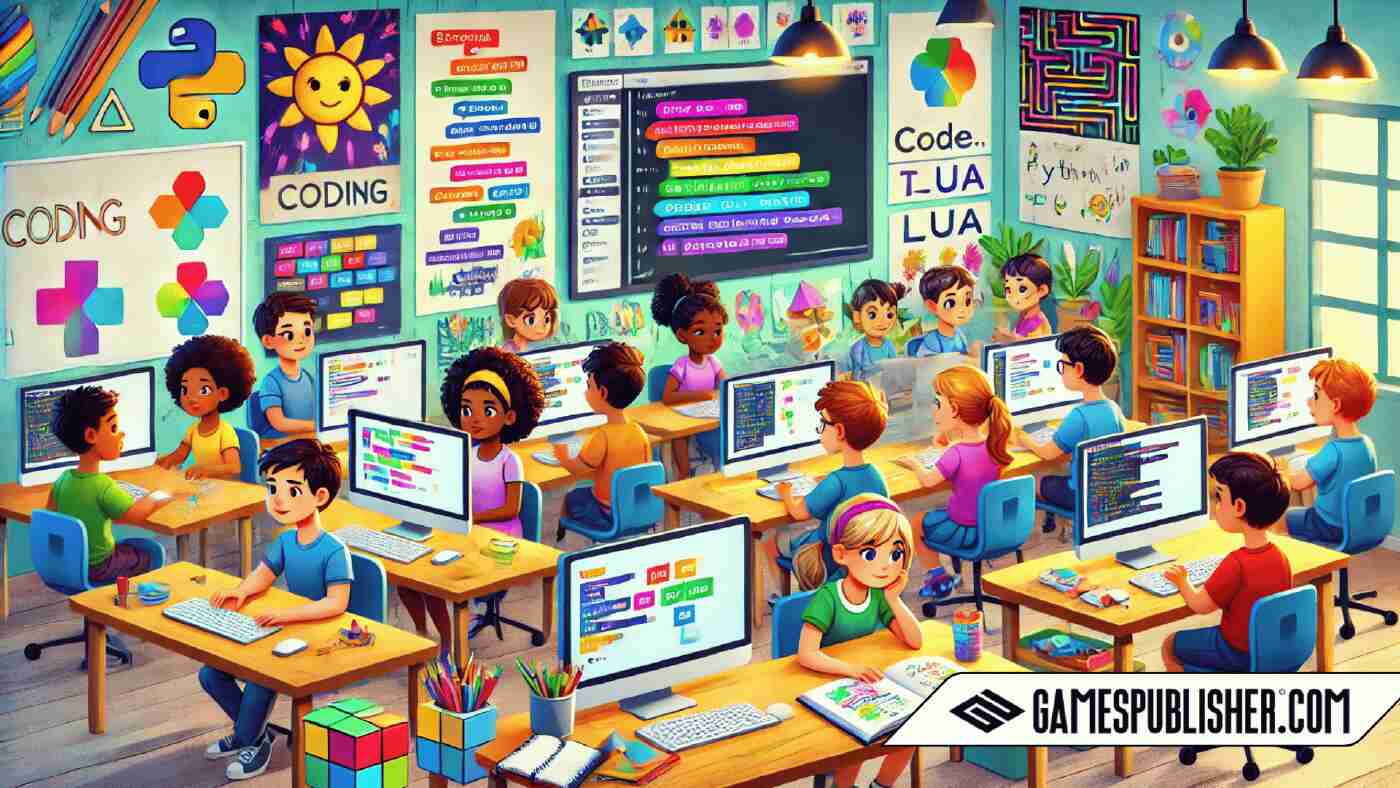In our digital world, learning how to code is becoming as important as reading or math. One of the most exciting ways for children to start their coding journey is through Game Coding for Kids.
By creating their own video games, kids can learn important skills while having fun. Gamespublisher.com is here to help both parents and kids get started on this exciting adventure.
Whether your child dreams of making their own video games or just loves technology, learning to code can open up a world of possibilities.
Why Game Coding for Kids is Important
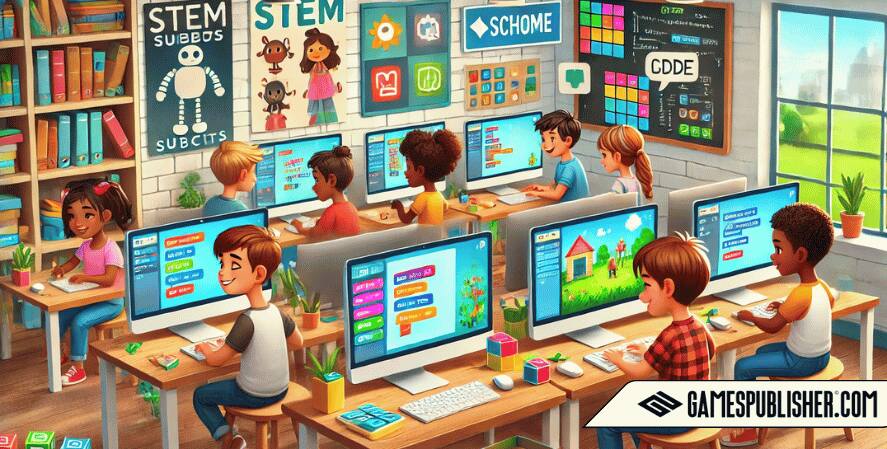
The Educational Benefits
Coding isn’t just for adults. Kids can learn important skills like problem-solving and logical thinking through coding. When children code their own games, they learn to think step-by-step, figure out how things work, and find solutions to problems. These skills are useful in all areas of life, not just in technology.
Creative Expression
Coding is also a way for kids to express their creativity. They can design characters, create stories, and build entire game worlds from their imagination. This mix of creativity and coding makes game development an exciting activity for kids.
Introduction to STEM
Game coding introduces kids to STEM (Science, Technology, Engineering, and Mathematics) in a fun and hands-on way. Instead of just reading about these subjects, kids get to explore them by creating their own games. This helps make STEM more interesting and easier to understand.
Getting Started with Game Coding for Kids
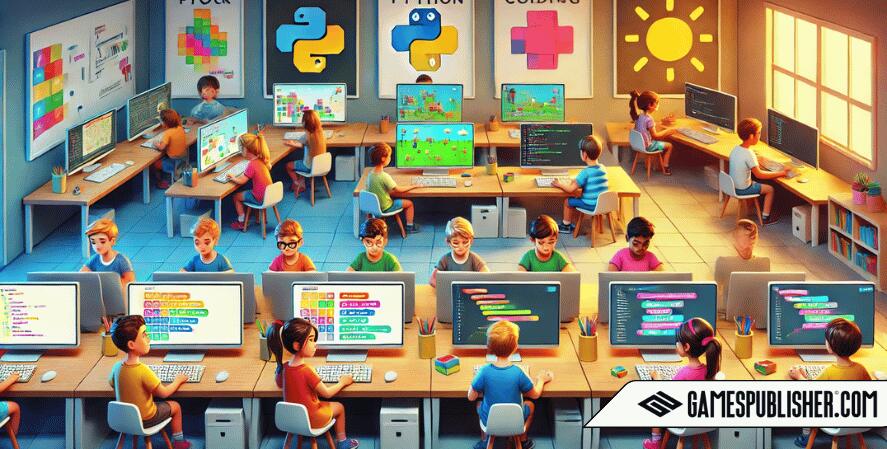
Choosing the Right Platform
To start coding, kids need the right tools. Some platforms, like Scratch, Tynker, and Code.org, are designed to be easy and fun for beginners. These platforms use visual programming, where kids can drag and drop blocks of code instead of typing it out. This makes learning to code more like playing a game.
Age-Appropriate Tools
Different ages need different tools. Younger kids might start with simple visual programming tools like Scratch. As they get older, they can move on to text-based coding with languages like Python or Lua. These languages offer more options and allow kids to create more complex games.
Learning Pathways
It’s important to start with the basics. Kids should learn simple coding concepts like loops, which repeat actions, and conditions, which make decisions in the game. Once they understand these, they can move on to more advanced ideas, like creating animations and game logic.
Popular Game Coding Languages for Kids
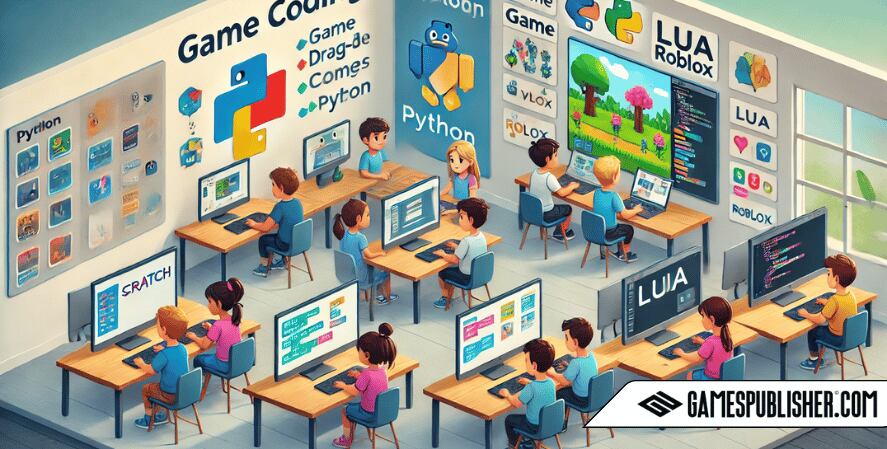
Scratch
Scratch is one of the best tools for beginners. It uses a drag-and-drop system, so kids don’t need to worry about typing mistakes. With Scratch, kids can learn the basics of coding, such as how to make things happen in a game when certain events occur.
Python
Python is a great next step for older kids. It’s a simple language that is easy to read and understand. With Python, kids can create more detailed and complex games. They can also explore other areas of coding, like making simple apps or even starting with robotics.
Lua
Lua is another beginner-friendly language, often used in the popular game platform Roblox. Kids can use Lua to create their own games within Roblox, giving them a taste of real game development while playing a game they already love.
Practical Tips for Teaching Game Coding
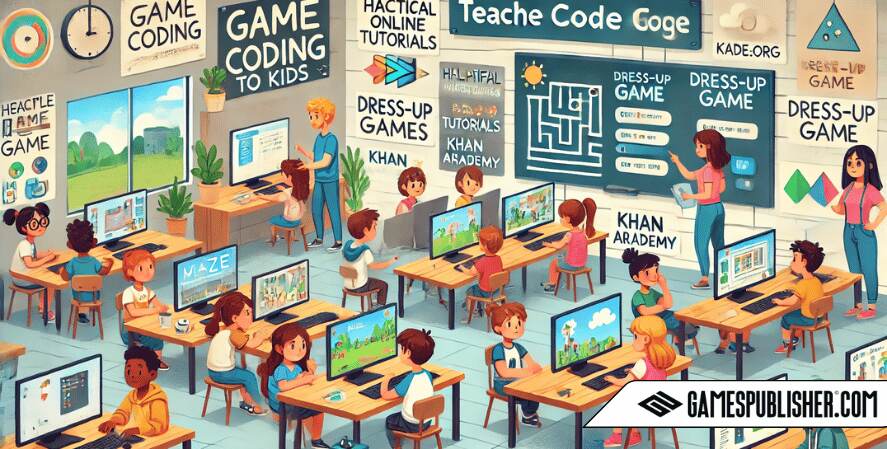
Encouraging Curiosity and Exploration
The best way for kids to learn coding is by experimenting and exploring. Let them try different ideas, even if they don’t always work. This kind of hands-on learning is where kids really start to understand how coding works.
Project-Based Learning
Kids learn best when they can see the results of their work. Start with small projects, like a simple maze or dress-up game. As they get more comfortable, they can move on to bigger projects, like a platformer or a basic RPG. This approach keeps learning fun and rewarding.
Using Tutorials and Online Resources
There are lots of online resources that can help kids learn coding. Websites like Code.org, Khan Academy, and the official Scratch site offer step-by-step guides and activities. These resources are great for kids who are just starting out or who want to learn more advanced skills.
Examples of Kid-Friendly Game Development Projects

Beginner Projects
For kids who are new to coding, simple games are the best way to start. Projects like a basic maze game or a dress-up game are easy to create and teach the basic principles of coding.
Intermediate Projects
As kids get better at coding, they can try more complex projects. Creating a platformer game, where a character jumps over obstacles, or a simple RPG, where characters explore a world and fight enemies, are great ways to challenge their new skills.
Collaborative Projects
Coding can also be a social activity. Encourage kids to work together on coding projects. This not only makes learning more fun but also teaches teamwork and communication skills.
The Role of Parents and Educators
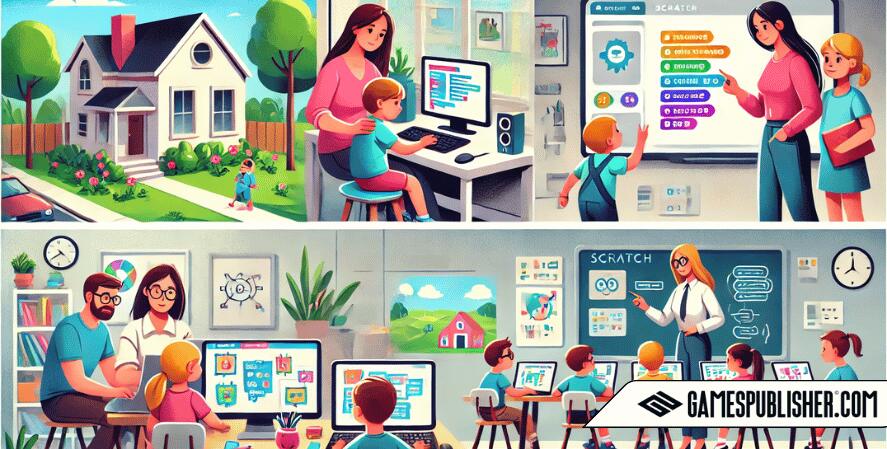
Supporting Learning at Home
Parents can play a big role in helping their kids learn to code. Start by setting up a quiet space for them to work and helping them find the right tools and resources. Encouragement and support can make a big difference in keeping kids motivated.
Integrating Coding into School Curriculum
Teachers can also help by including coding in their lessons. Even if they don’t know much about programming, they can use tools like Scratch to introduce coding concepts. This makes learning about technology part of the regular school day.
Monitoring and Encouragement
It’s important to keep track of progress and celebrate successes. Even small achievements should be praised, as this keeps kids excited about learning. If they run into problems, help them see these challenges as opportunities to learn, not as failures.
Conclusion
Learning to code through game development is a fun and valuable activity for kids. It helps them develop problem-solving skills, creativity, and an interest in technology.
By starting early, kids can build a strong foundation for the future. Whether they go on to become game developers or just enjoy creating as a hobby, coding is a skill that will serve them well throughout their lives.
Visit Gamespublisher.com for more tools, tutorials, and tips to help your child get started on this exciting journey today.
Loading survey...

